Silver Dollar Porter - first AG brew - with pics
Silver Dollar Porter - first AG brew - with pics
I'm waiting for the ingredients to arrive to kick off my first AG brew. I going to try Charlie Papazian's Silver Dollar Porter as I'm a fan of Anchor Porter and this is supposedly a clone. Has anyone tried this recipe?
Also, I don't seem to be able to buy a sparge arm from any of the well known suppliers, does anyone have any tips for sparging without one?
All help is welcome,
Jymbo
Also, I don't seem to be able to buy a sparge arm from any of the well known suppliers, does anyone have any tips for sparging without one?
All help is welcome,
Jymbo
Last edited by Jymbo on Tue Jun 26, 2007 8:31 pm, edited 1 time in total.
-
roger the dog
I got my 8.5" spinny sparge arm from homebrewwales, (in the mash tuns & mash tun/boiler section). I would ring them first though as the site doesn't give the stock level, the gentleman on the phone was very friendly & helpful.
-
oblivious
-
Wez
Same Here! Top Fellaroger the dog wrote:I got my 8.5" spinny sparge arm from homebrewwales, (in the mash tuns & mash tun/boiler section). I would ring them first though as the site doesn't give the stock level, the gentleman on the phone was very friendly & helpful.
- Barley Water
- Under the Table
- Posts: 1429
- Joined: Tue May 22, 2007 8:35 pm
- Location: Dallas, Texas
If this is your first all grain brew, I would not spend a ton of time worrying if the recipie is a good clone. I can tell you that Charlie did a pretty good job with his book and taught alot of people how to homebrew (including me). I think though that his stuff is a little out of date now but I also think that your brew should turn out well regardless. You are fixing to find out that there are a heck of alot of variables to consider when doing all grain vs. using extracts and they will affect the taste of your beer.
If I were you, I would plan on about 65% extract efficiency. If you find you got better than that, it is much easier to water down a batch than it is to try and hike up the gravity mid process. Your main goal should be to document exactly what you did to get the gravity you end up with. People here will tell you that getting great efficiency is not important, being consistent however is (and they are correct). You need to be able to reliably predict what your starting gravity will be give a particular malt bill and you do this by trial and error. Finally, if you were using extracts previously and boiling less than the total volume of wort, you will find that your hop utilization rate will increase. This is not a good or bad thing but you will find your beer will be more bitter and that is why.
You have picked almost the perfect style to start all grain brewing. Porter is very forgiving in that off flavors etc. are easier to hide and the style allows for a very wide spread in starting gravities. Making a great porter is difficult but making a passable one is not real difficult. Furthermore, a single infusion mash is the preferred process and the dark grains will almost guarantee that starting ph will be in the 5.2 neighborhood so the mash should go well.
I know you are going to have a great time, I hope it turns out well. One thing Charlie always says is "relax and have a homebrew". Probably not bad advice but I would wait to relax until after you get the wort in the fermenter and remember, take good notes so you can do it again next time.
If I were you, I would plan on about 65% extract efficiency. If you find you got better than that, it is much easier to water down a batch than it is to try and hike up the gravity mid process. Your main goal should be to document exactly what you did to get the gravity you end up with. People here will tell you that getting great efficiency is not important, being consistent however is (and they are correct). You need to be able to reliably predict what your starting gravity will be give a particular malt bill and you do this by trial and error. Finally, if you were using extracts previously and boiling less than the total volume of wort, you will find that your hop utilization rate will increase. This is not a good or bad thing but you will find your beer will be more bitter and that is why.
You have picked almost the perfect style to start all grain brewing. Porter is very forgiving in that off flavors etc. are easier to hide and the style allows for a very wide spread in starting gravities. Making a great porter is difficult but making a passable one is not real difficult. Furthermore, a single infusion mash is the preferred process and the dark grains will almost guarantee that starting ph will be in the 5.2 neighborhood so the mash should go well.
I know you are going to have a great time, I hope it turns out well. One thing Charlie always says is "relax and have a homebrew". Probably not bad advice but I would wait to relax until after you get the wort in the fermenter and remember, take good notes so you can do it again next time.
-
prodigal2
-
Wez
-
tubby_shaw
-
AT
Well, folks,
Pics below as promised. Overall the brew seemed to go fairly well, however I had some problems with the temperature of the mash. Depending on where I stuck the thermometer I got a different reading. This resulted in the middle of the mash (where I took most of my temperature readings) being about 67C for most of the mash but the liquid below the grain bag was above 70C. Not sure what this will do to the wort but we'll wait and see.
Fermentation had started when I looked this morning but didn't seem to be as vigorous as the extract brews or kits that I have done in the past, although the airlock was bubbling away.
Will keep you posted.
Jymbo
1. Started the mash with a protein rest:
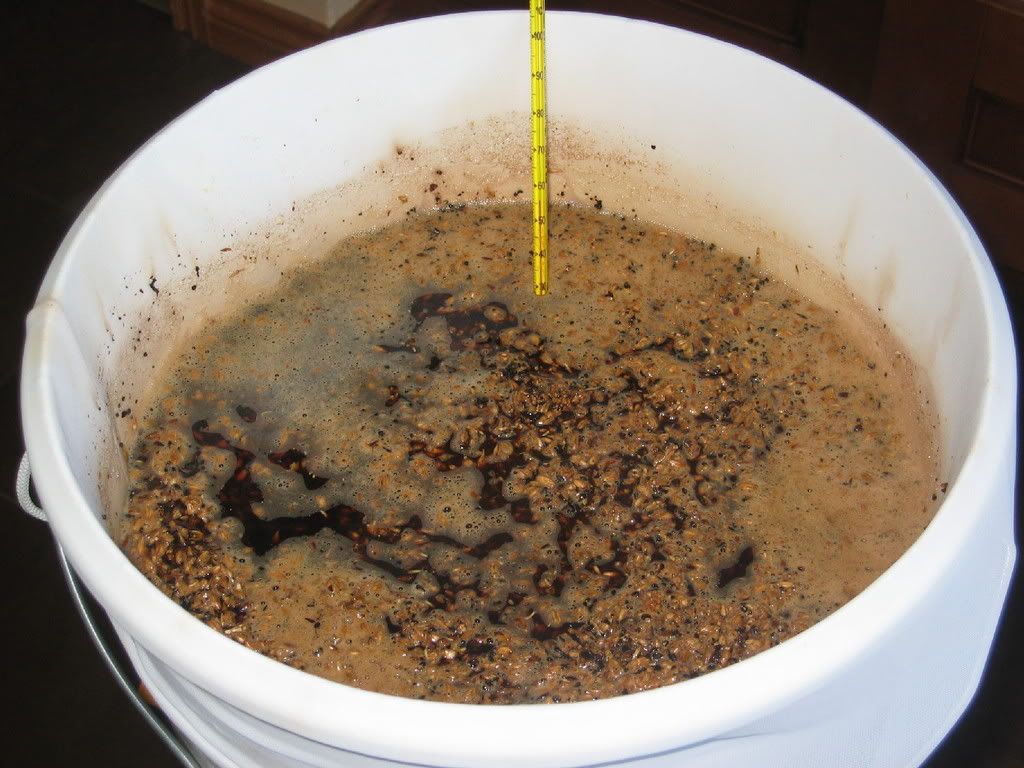
2. Had to improvise as I didn't have a sparge arm so I took out the drill and mutilated a large plastic lunchbox:
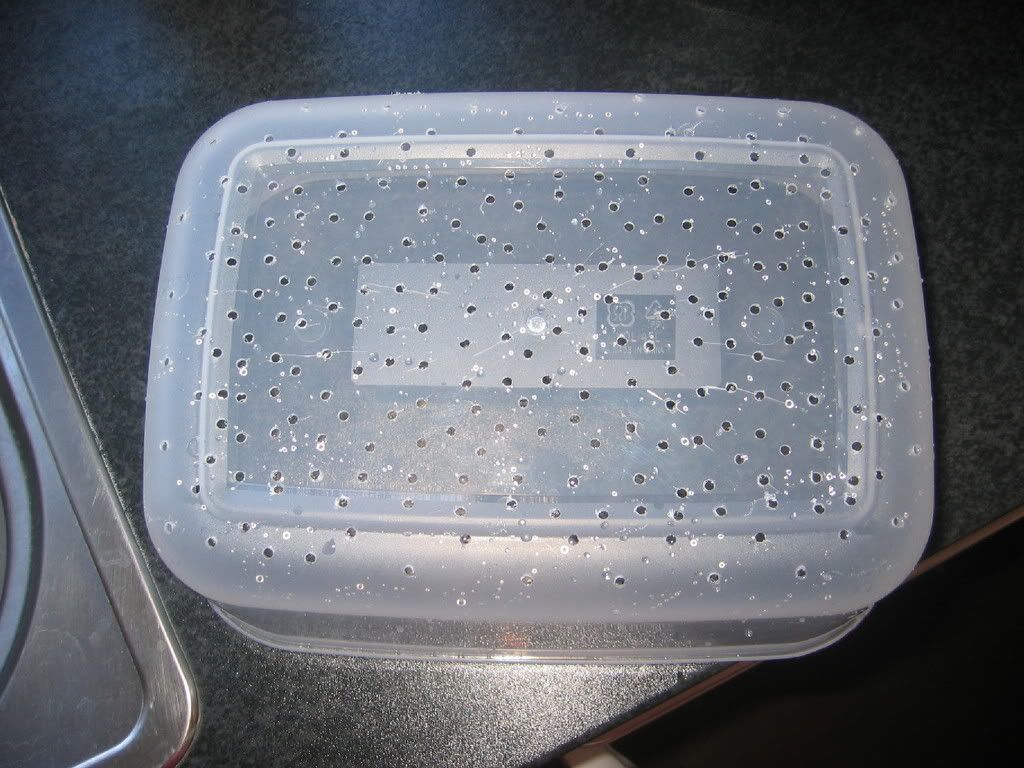
3. Sparging
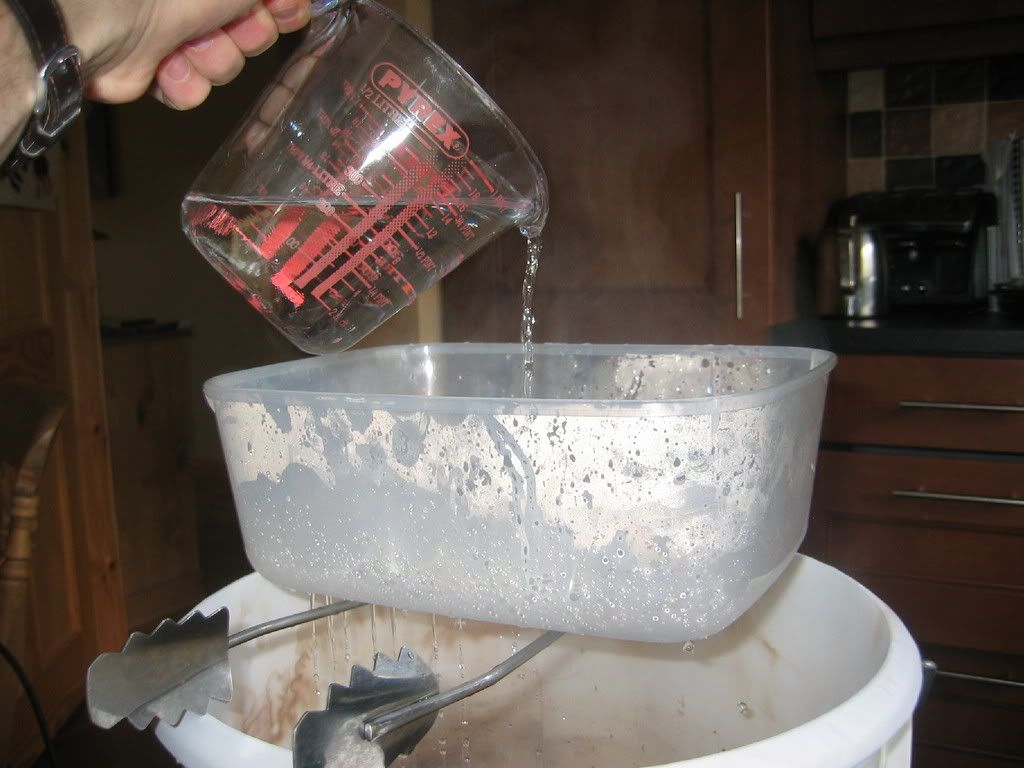
4. Running off the wort
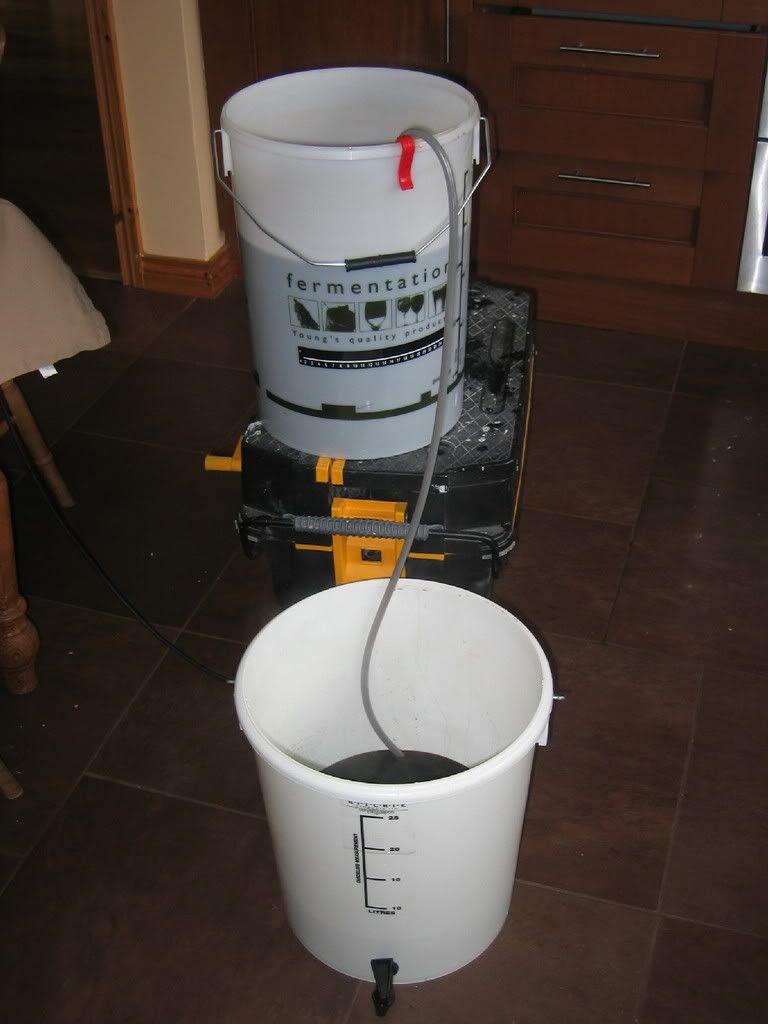
5. Weighing the hops
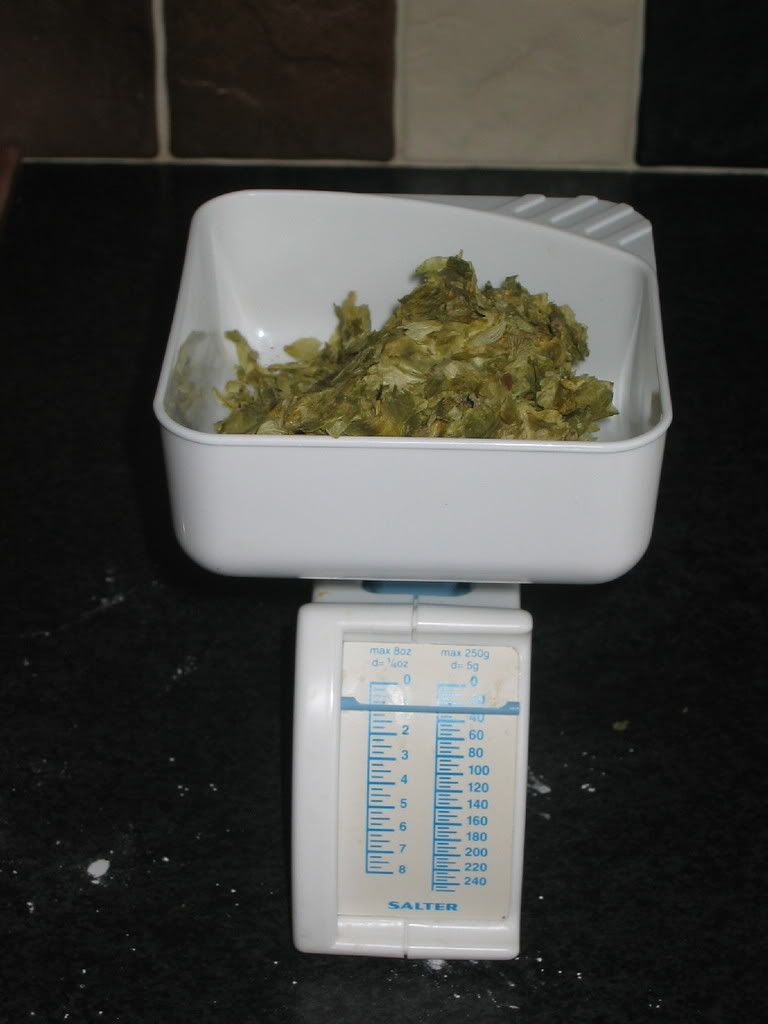
6. Boiling
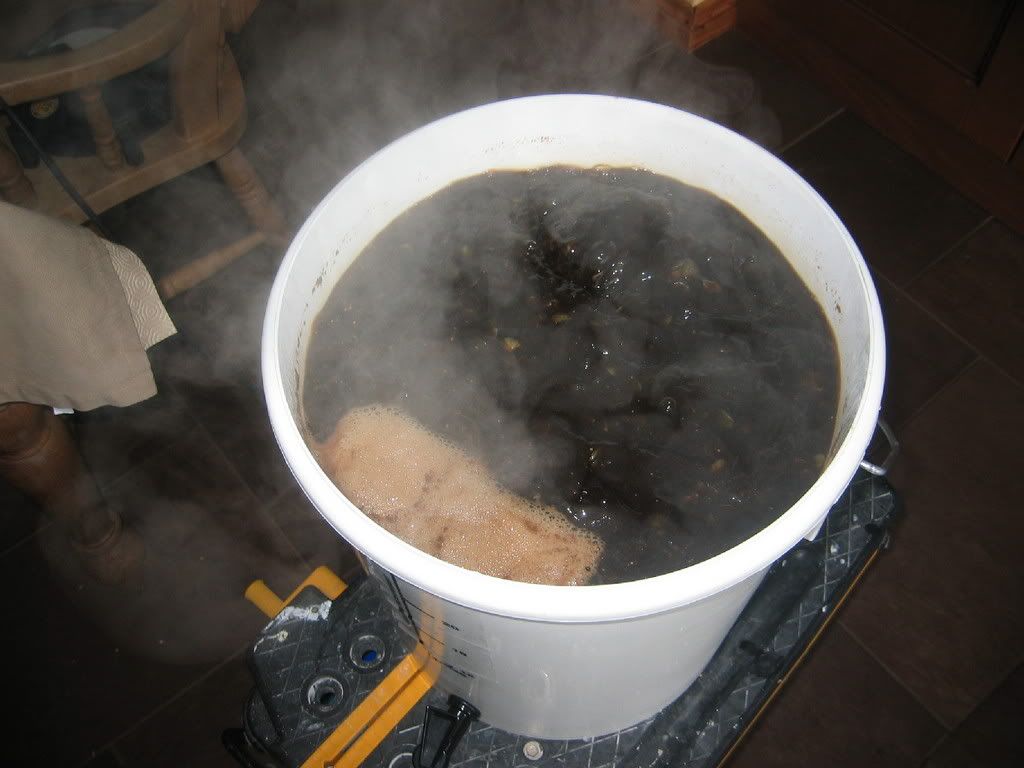
7. Cooling
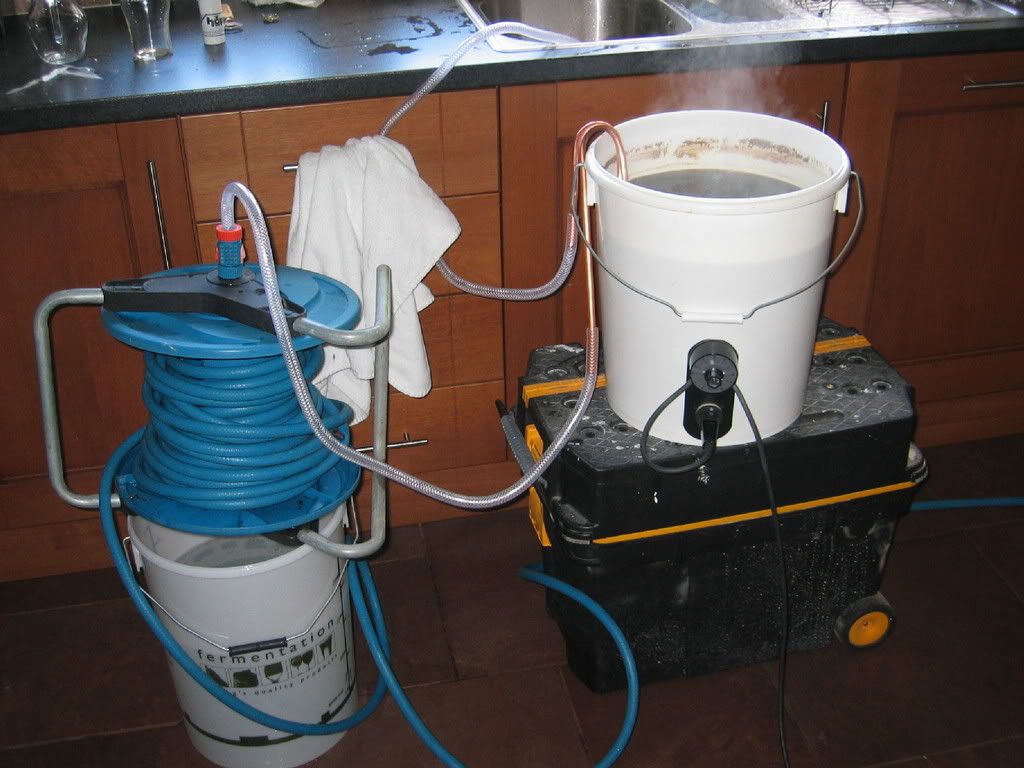
8. Aerating the wort - also paddled for 5 mins
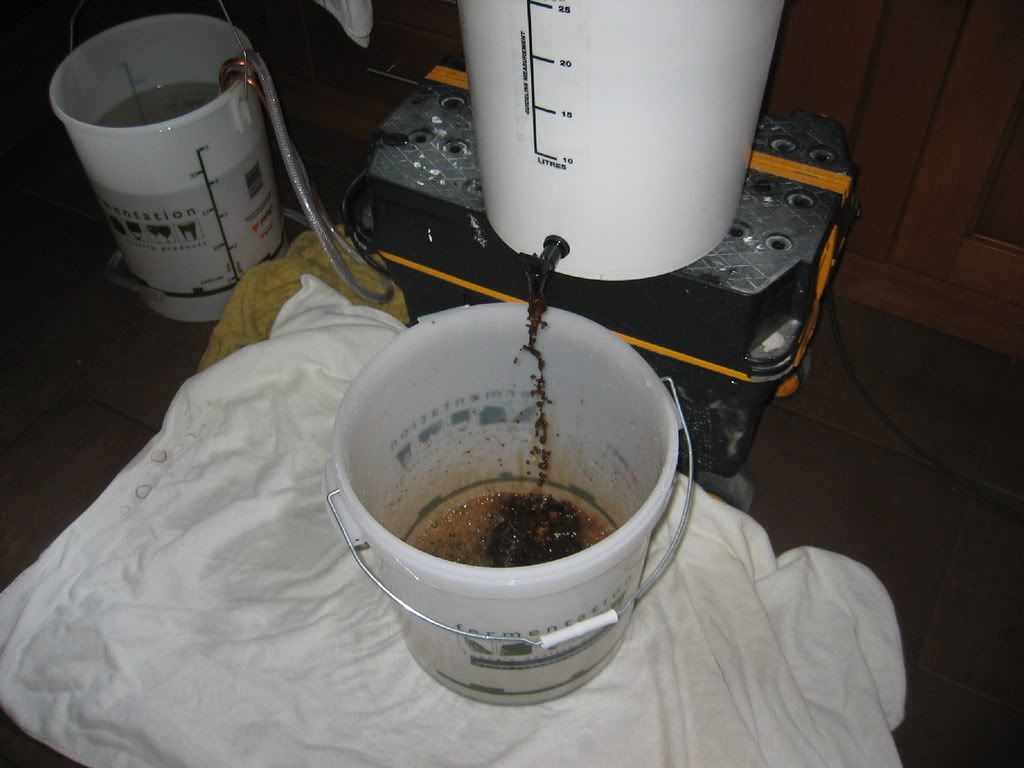
9. The aerated wort
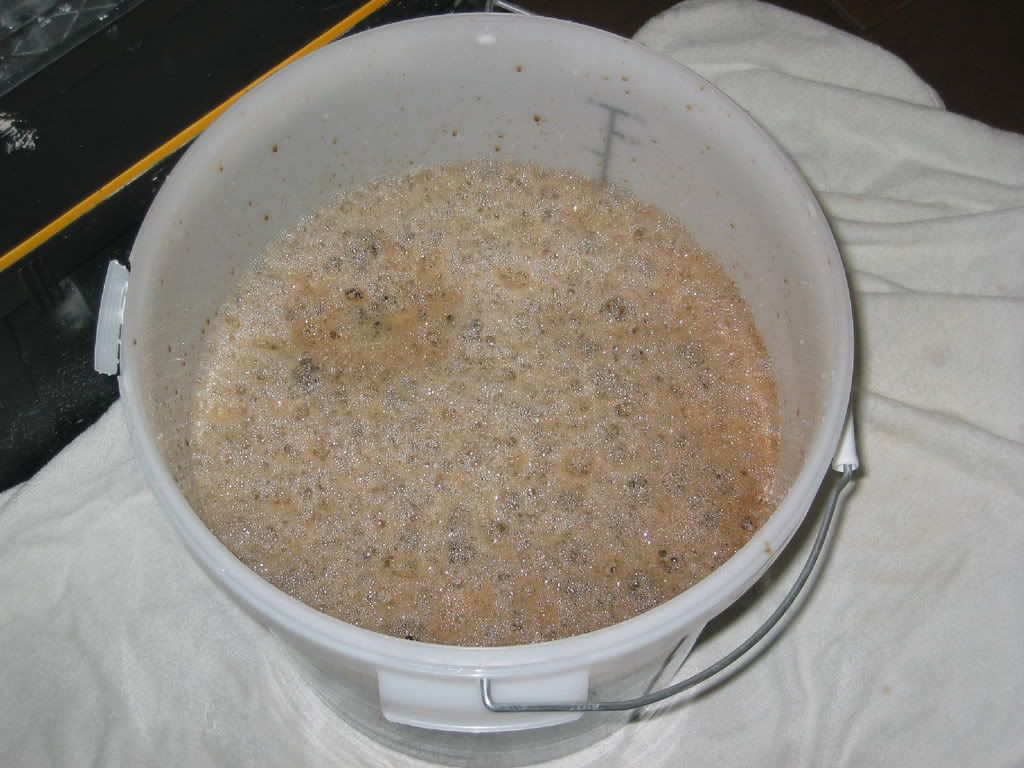
10. Hydrated the American ale yeast
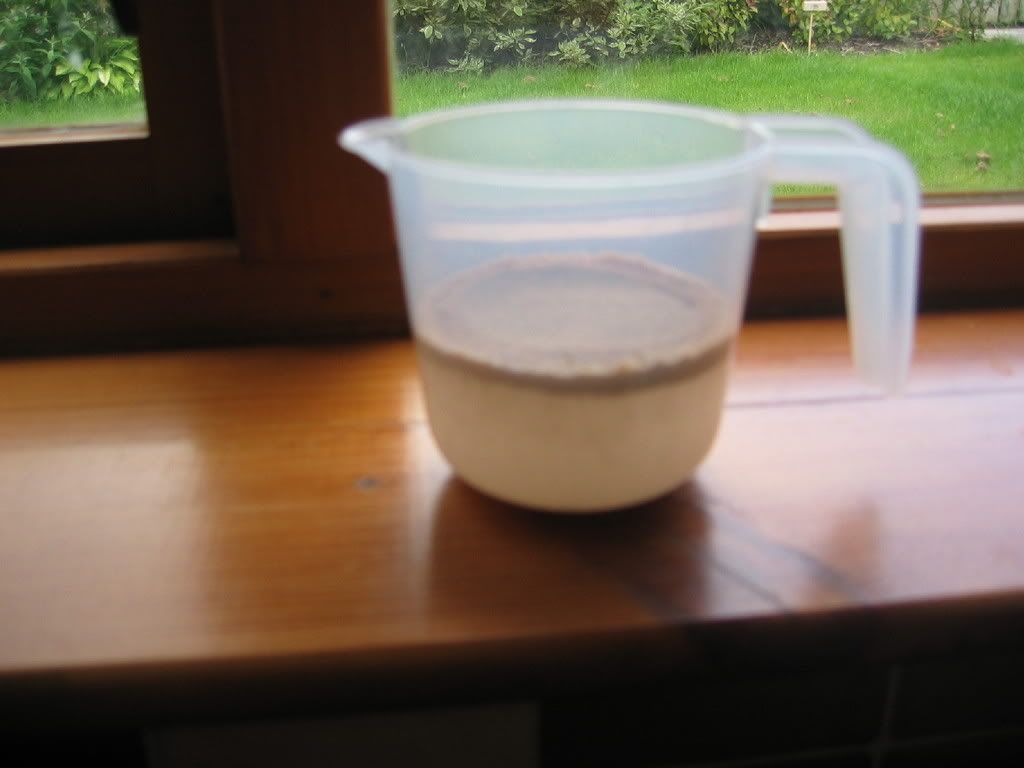
11. SG was 1052 - recipe said 1052-1056, so not far off, although volume was 18L rather than the recipe's 19-20L
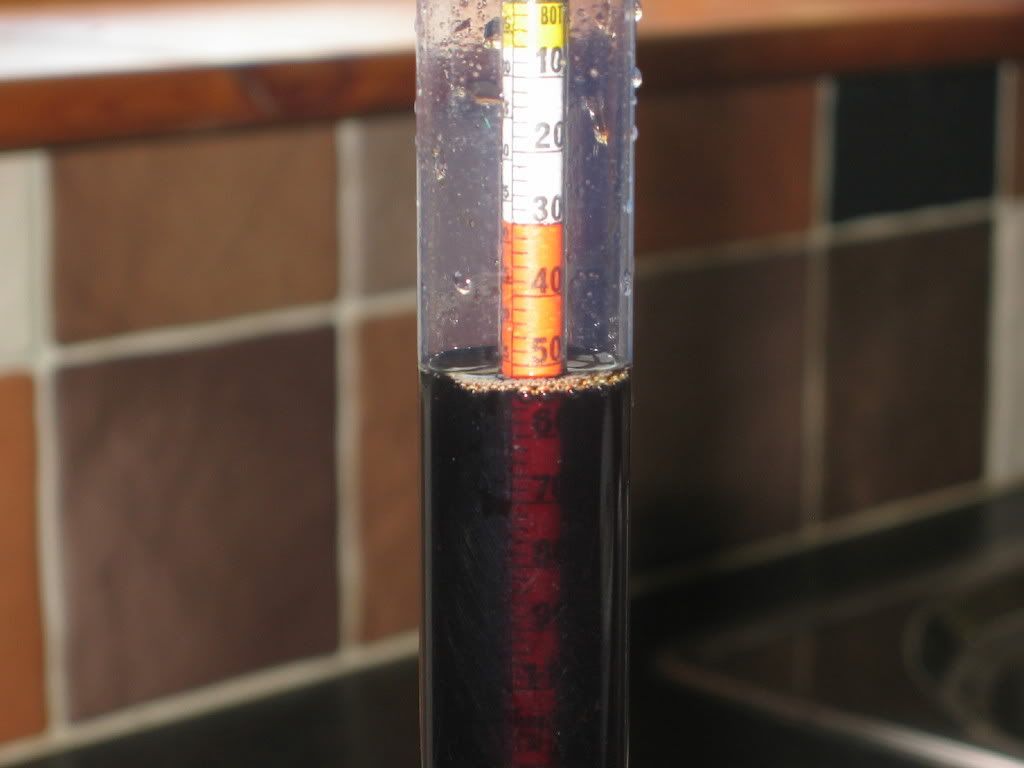
12. Pitched yeast at about 23C
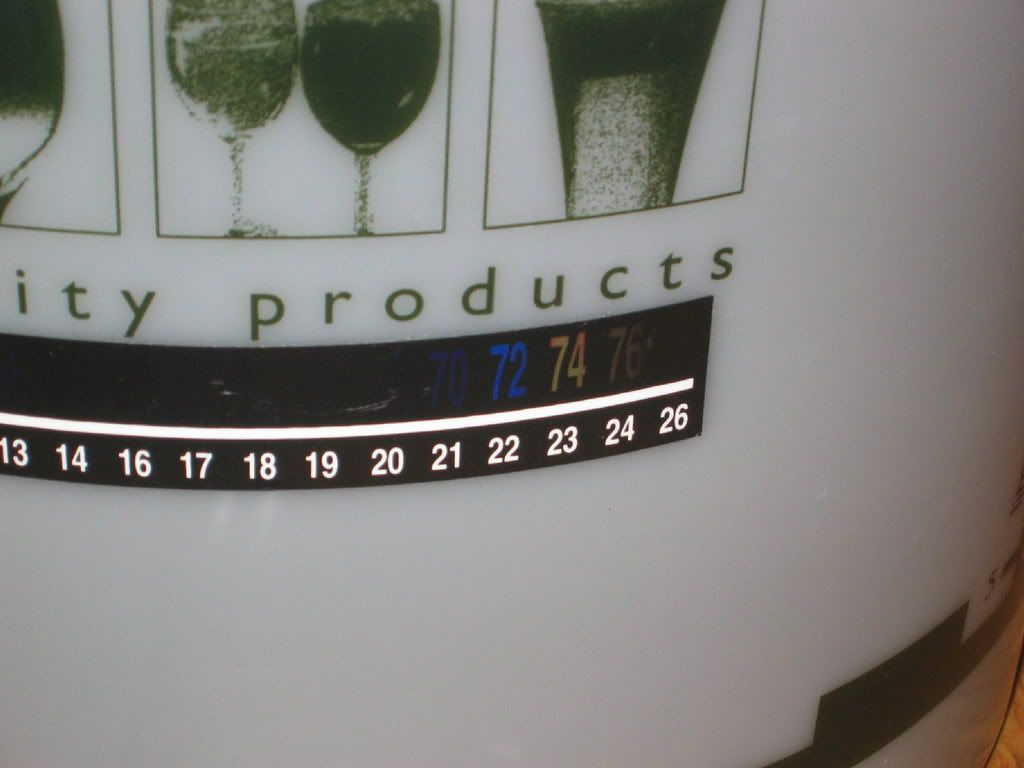
Pics below as promised. Overall the brew seemed to go fairly well, however I had some problems with the temperature of the mash. Depending on where I stuck the thermometer I got a different reading. This resulted in the middle of the mash (where I took most of my temperature readings) being about 67C for most of the mash but the liquid below the grain bag was above 70C. Not sure what this will do to the wort but we'll wait and see.
Fermentation had started when I looked this morning but didn't seem to be as vigorous as the extract brews or kits that I have done in the past, although the airlock was bubbling away.
Will keep you posted.
Jymbo
1. Started the mash with a protein rest:

2. Had to improvise as I didn't have a sparge arm so I took out the drill and mutilated a large plastic lunchbox:

3. Sparging

4. Running off the wort

5. Weighing the hops

6. Boiling

7. Cooling

8. Aerating the wort - also paddled for 5 mins

9. The aerated wort

10. Hydrated the American ale yeast

11. SG was 1052 - recipe said 1052-1056, so not far off, although volume was 18L rather than the recipe's 19-20L

12. Pitched yeast at about 23C


